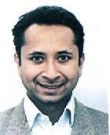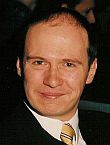  Biography Biography
Sohel Aziz is a Principal Architect with Infosys Technologies,
Ltd. Sohel has over 12 years of experience as a technology
architect, technology program manager and analyst.
Sohel has extensive experience in Enterprise and Technical
Architecture Assessment and Definition, Technology
Product Selection and Technology Business Case Development.
He has specifically worked with Enterprise Middleware
technologies, design and development environment technologies
and architecting distributed, multi tiered and highly
available applications. His current focus areas are
Enterprise Architecture and effective governance models
for ensuring business-IT alignment through leveraging
architecture.
Sohel has been involved in numerous engagements in
architecting and implementing enterprise frameworks,
providing enterprise-class solutions and researching
technical trends. He has lead workshops on leading
edge technologies such as Web Services, Service-Oriented
Architectures and Legacy Componentization and Enterprise
Architecture.
Sohel holds a MBA from INSEAD, France and a Bachelors
degree in Information Systems and Computer Science
from National University of Singapore, Singapore.
  Biography Biography
Santonu Sarkar is a Senior Technical Architect of Infosys Technologies Ltd, India.
He received the PhD degree in computer science from IIT Kharagpur in the area
of object oriented modeling of VLSI circuits. He has nearly 13 years of industrial
software development experience in various distributed enterprise applications
and product development. His current research interests include Architecture
modeling and analysis, Enterprise Architecture, formal modeling and QoS analysis.
|
  Biography Biography
Thomas Obitz is a Senior Technical Architect with the Technology Consulting Group
of Infosys Technologies, Germany. Having studied Mathematics at Johannes Gutenberg
University, Mainz, he has since gathered about 15 years of experience in software
development.
Thomas has broad experience conceptualizing and designing
large scale distributed systems, especially in the
the area of investment banking and capital markets.
He has been working with enterprise architecture groups
reviewing application landscapes and adopting them
for improved support of the corporate’s processes
and value propositions.
His major areas of interest are enterprise architecture,
its potential vs perceived benefits, and mechanisms
for its effective implementation.
  Biography Biography
Reva Modi is a Technical Architect of Infosys Technologies Ltd, India. She received
her Bachelor’s in Computer Science from Birla Institute Of Technology
and Sciences, Pilani, India. She has nearly 11 years of software development
of distributed enterprise applications, enterprise application integration
and consulting across various industry domains. Her current research interests
include Architecture modeling and analysis, Enterprise Architecture, and Enterprise
Application Integration.
|